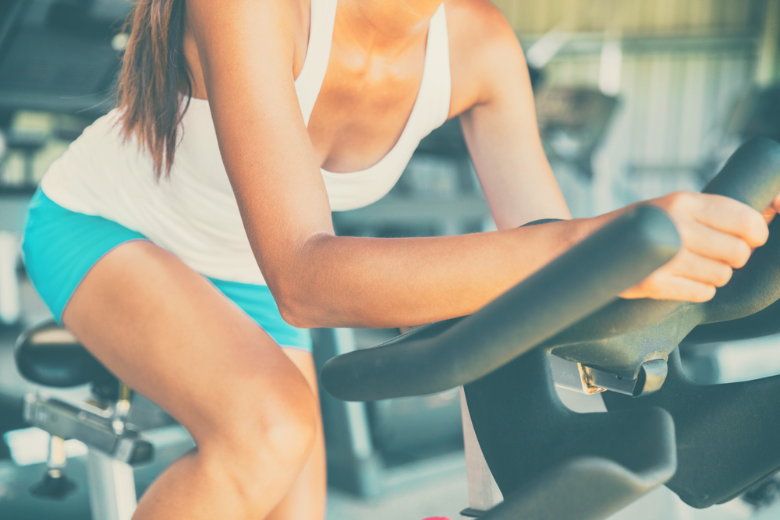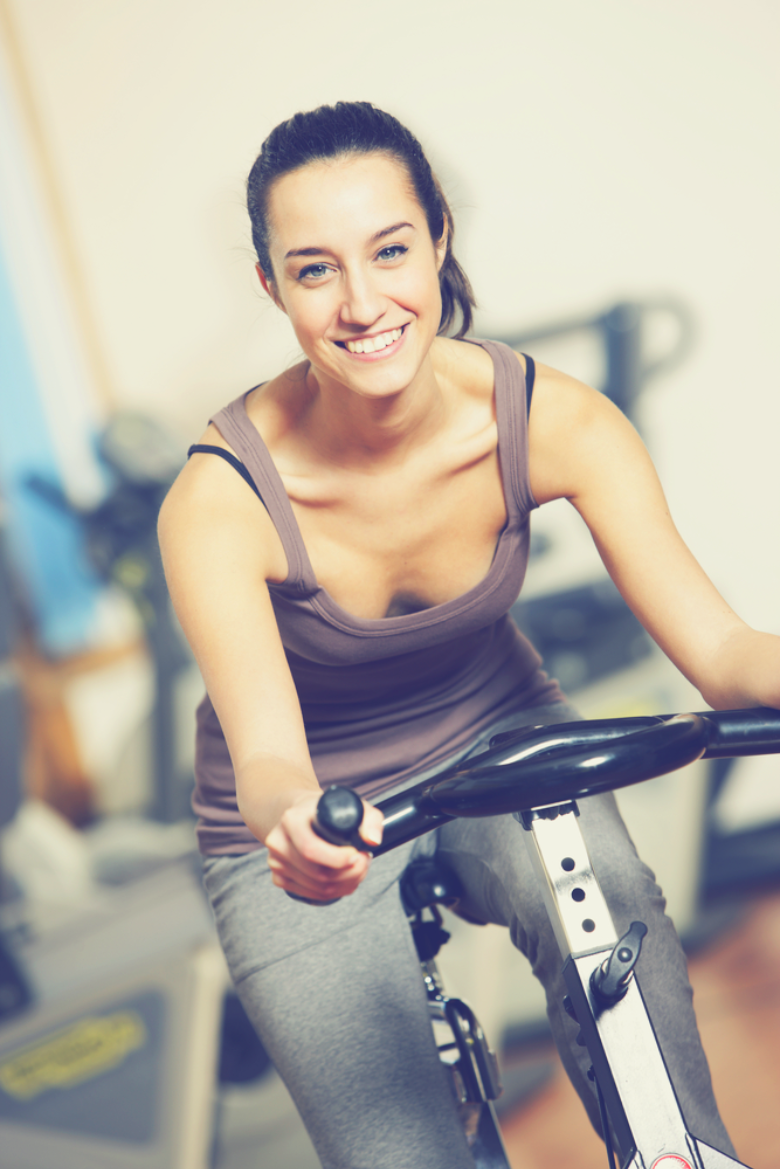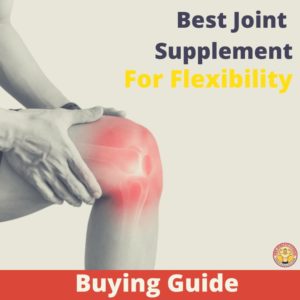Getting into shape is hard, especially if you can’t get to a gym or don’t have a reliable setup for working out at home.
This is where an exercise bike can come in handy.
The indoor cycling benefits are plentiful, and depending on the model of bike, it doesn’t require a large amount of space like other exercise equipment or machines.
The Health Benefits
Exercise bikes have a lot of benefits for your health since cycling in of itself has a positive effect on various body systems.
Here are just a few examples of how an exercise bike can benefit your health.
Heart Health
Most people overlook the fact that your heart is a muscle, and just like any other muscle, it needs proper exercise and training.
Unlike other muscles in your body though, your heart kind of works on its own.
You can’t just focus on your heart and manually contract it like you can your bicep.
You have to use other exercises to increase your heart rate, which is where cardio comes in. Cardio is essentially a group of exercises that focus on your heart.
Cycling is a great form of cardio.
Setting your exercise bike to low to medium resistance will help make your cardio workout more effective, as cardio exercises rely on low to medium intensity movements for an extended period of time.
The longer you exert your muscles, the more adrenaline will be released into your system to keep your body going, increasing your heart rate so that your muscles maintain adequate blood supply.
Since you need to burn off your sugar reserves before being able to burn off fat, cardio can be a quick and easy way to lose weight, or get to a point where you’re converting fat into muscle when switching over to free weight exercises.
Muscle Toning
Another benefit of indoor cycling is that it is an easy way to tone your muscles.
Unlike strength training and bulking, toning is mostly achieved by doing low resistance / high repetition exercises.
This also includes things like running, swimming, and cycling, since you’ll generally be shooting more for endurance and pedaling for an extended period of time rather than forcing through the motions on the highest resistance settings.
Regular cyclists who tend to bike ride on non-stationary bikes tend to have extremely toned legs as well for that reason.
Since your hamstrings, glutes, and quads are all active in pushing the pedals of the bike, those groups in particular including the gastrocnemius (more commonly known as the calf muscle) will become more defined.
Strengthening

While you are toning your muscles doing low to medium resistance exercises, upping that resistance will tip the scales more towards strength training and bulking.
While you’ll get a decent amount of strength training with lower resistance, the fact there is a resistance setting can help you specifically cater your exercise routine towards strength training and muscle building.
Another added benefit to both strength and endurance training is that since the exercise bike is stationary and on level terrain, the exercises will be easier on your knees than simply riding a bike outdoors.
Great for Joint Health
When examining exercises like running, jogging, or any kind of activity where your foot is consistently impacting the ground, it’s important to note that these kinds of exercises can put a lot of pressure on your joints.
When running, your ankle joint can experience forces up to seven times your body weight.
Your joints are specifically made to accommodate these forces – the various ligaments and tendons helping support and stabilize the joint, while also distributing those forces throughout the foot.
Another one of the great indoor cycling benefits is that there isn’t as much hard impact when cycling compared to exercises like jogging or running.
This means less stress and strain on your joints, reduced joint pain, and lower chance of injury.
If you already suffer from joint pain or motion issues, cycling can help give you an option that won’t put even more stress on your weakened joints.
Helps Your Mood
Any kind of physical activity or exercise can help put you in a better mood, cycling included.
Physical activity releases chemicals called endorphins. These chemicals along with serotonin are the feel-good chemicals of the brain, helping to improve your mood, as well as help to reduce feelings of loneliness and encourage socialization.
In addition to releasing endorphins, physical exercise helps increase blood flow to the brain. This can help your brain think more clearly as well as help improve your memory.
Do You Have Room For a Bike
One of the biggest factors that play into whether or not you can even get an exercise bike is if you have enough space.
The footprint an exercise bike might leave really depends on the model of bike you are looking to get.
On average, they range from about 130cm – 170cm long and about 50cm wide.
If space really is a big issue, there are also folding bikes that are easier to store when not in use.
You’ll want a little bit of extra room to move outside of the bike’s general dimensions as well.
Types of Bikes
Exercise bikes generally come in three model types.
These three bikes provide slightly different indoor cycling benefits. What you’re looking to get out of your exercise bike is likely to determine what model is best for you.
Indoor Cycles
These exercise bikes replicate the actual cycling experience.
These are great for people who are serious about training and do a mix of indoor cycling and outdoor cycling.
These bikes usually work off of a chain drive resistance system, emulating the chain mechanics of an actual bike.
The resistance for these bikes is also set manually.
The one main downside to indoor cycles is that they often don’t have as many add-ons and features as some of the other models, though this is mainly because the focus is on training and performance.
Upright Bikes
Upright bikes tend to give the best experience in terms of cardio and if you’re looking for something more space-efficient.
Upright bikes are probably the most general in terms of benefits, being a great fit for a wide range of users.
While you can lean forward while riding, keeping your body upright has the added benefit of helping work your core muscles while you cycle as well.
Recumbent Bikes
Recumbent bikes offer a more relaxed cycling experience.
Rather than a traditional wedge bike seat, they offer a seat with full back support, allowing for a more relaxed and reclined position.
The position and comfort aspects of these bikes will definitely help keep pressure off of your back and are generally better for more relaxed riding.
While they might not be the best for those looking for higher intensity exercise, they are great for users who are just starting to get in shape or recovering from injuries.
Know Your Budget
Depending on the model you’re looking to get as well as any add-ons and specifications, exercise bikes can cover a wide price range.
You can get a basic entry-level bike for somewhere around $200, but the price only goes up from there, ranging anywhere from $500 – $2,000 for particularly high-end machines.
The model and specifications you’re looking for may end up being somewhat limited by your budget, so it is important to do your research and price out machines to find the best fit for you. While the higher price usually means better quality, you might be able to do just fine with a lower cost machine if you’re going for more casual use.
Options and Specifications
There are many specific addons and specifications that exercise bikes can come with.
These might make some bikes more ideal to your needs than others, though they generally also increase the price of the bike as well.
Here are a few specifications to keep an eye out for which might help you narrow down your options.
Flywheel and Resistance
The flywheel is essentially what gives your bike resistance but also allows for a smooth ride.
Your pedaling gives power to the flywheel, causing it to rotate and gain momentum.
When looking at a flywheel, you’re going to want something fairly heavy – 7kg is good for an entry-level bike and is a decent baseline for comparison.
Depending on the model of bike, the flywheel might be heavier or lighter to accommodate some of the other features.
Portable or foldable bikes, for instance, will have lighter flywheels since you’ll most likely be moving them in and out of storage.
Higher performance bikes will tend to have heavier flywheels to keep that momentum going and provide a wider range of resistance.
Console
The console is the display for the bike, usually affixed between the handlebars, which allows for easy adjustments of the bike’s settings.
Not all bikes have a console and are adjusted manually with levers or dials. For those bikes that do have consoles, the complexity can vary widely.
Some simply have the option to adjust your resistance and other settings conveniently while the bike is in use.
Others can load exercise programs, track your usage times, distance, and other metrics, and others even have audio and other input options to help keep track of your performance.
Aesthetics
Aesthetics can be important for an exercise bike.
Even though it might not do much in the way of performance or giving you a better workout, sleek aesthetic design can make the bike more pleasing to look at and make it feel less like you have this massive machine just sitting in the corner of your room.
Also commonly referred to as the ‘wow factor’, the aesthetic design of an exercise bike can make it stand out in a good way, almost making it feel like a piece of decor.
If you’re going to buy an exercise bike that is going to be fairly noticeable, you’re going to want something you at least enjoy looking at.
Portability

Sometimes you don’t have room for a full freestanding bike to be ready for use at all times.
This is where foldable bikes come into play.
While you probably won’t be able to take your exercise bike out to a friend’s house if you want to work out on the go, some measure of portability can help reduce the amount of space a bike takes up when not in use.
Bikes with portability built into their designs are usually more lightweight, but also generally don’t give as much resistance as some of the fixed position bikes, so keep that in mind if you are looking for a foldable bike.
The Takeaway
There are a lot of indoor cycling benefits, both when it comes to getting in shape and helping your overall health.
While there are a lot of options when it comes to exercise bikes, it’s important to know your needs and find a bike that’s best suited for you.
The first step is to see which type of bike is best for you, an indoor, upright, or recumbent bike.
Once you have that figured out, you can start looking at specifications, add ons, and other features to make sure you get the perfect bike for you.
Whether you’re looking to start getting in shape, trying to find a way to exercise after recovering from an injury, or are planning on putting in some serious training to prep for sporting events or long-distance cycling trips, exercise bikes can help you achieve your goals.
They help with both cardio, strength training, and with helping build lung capacity as well.
Since they can be a fairly large investment, it’s recommended you look into available warranties as well to help cover the cost of repairs if you run into any technical problems.



